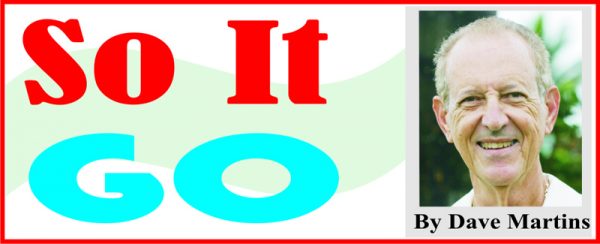
Remembering that episode with my friends Joe Henry and Jack Henry from Vreed-en-Hoop (I believe the Coghlan House is still standing) led me to reflect on those years in the 1950s. We were a bunch of fresh youngsters starting out in life. Many of the experiences we shared live in my memory, going back to the time of the British Guiana it was then. Another episode, one I’ve touched on before, was the weekend bike rides our Vreed-en-Hoop bunch often made to the Canal area on the West Bank, where Neville DeRamos, one of our group, had relatives in the cattle business who had abundant whitey trees on their land; that was the magnet for us. We would set out Sunday morning early, and come back in the afternoon, bicycle handles laden down with bags of whitey. In the simple, quiet country life of that time, those whitey trips were a treat, an exuberant high, but still falling silent as we passed the “haunted” house at Schoonord, going and coming.
I also remember fondly the trips during August school holidays to my father’s coconut and coffee farm in the Pomeroon, where he had shaddock trees almost breaking down with the weight of the huge fruits common to the Pomeroon. It was a long trip to get there: train from Vreed-en-Hoop to Parika, steamer to Adventure on the Essequibo, then bus ride, with Mr. Kass, to Charity, and then speedboat to the Martins farm about two miles away. Mind you, the mosquitoes were horrendous – after 6pm, everything under mosquito net, even dinner – but the rewards were substantial. Endless fruits, from oranges to five-finger, bananas to soursop, plus cautious swimming in the river where perai lived, and a peaceful sedentary way of life – although I must admit I was always nervous about the early morning sounds of the baboons howling in the jungle.
Back then, I was a student at Sacred Heart School in Main Street, boarding at my De Souza cousins at 189 Carmichael Street, and so I had easy access to the shave-ice man in that area, known simply as “Preep” for his very loud “shave ice” whistle. My memory is blank for what a “press” cost in those days, but is very clear that it was a big treat for us on a hot day. We didn’t know much about Preep, or where he lived, but when it rained hard and he didn’t show up, we sure missed him. He had three different colours of syrup, all delicious.
I can’t recall a snow-cone man at Vreed-en-Hoop. Neither was there anybody to match Garamai – the man in Georgetown I encountered during my time at Saints – who moved around the city by bicycle, stopping here and there for faithful customers patronising his various Indian treats, but in particular his “potato balls”. Garamai could be a testy character, not given to much small talk, but nobody cared – everything he had in his baskets was delicious.
When I graduated from Saints, and started working in the B. G. Airways office at Atkinson Field, I came to know first-hand the red-dirt East Bank Road, which could be a treacherous path in the rainy season, and almost a dust machine in the dry spells. Going to “the Base”, as we labelled Atkinson, on those East Bank buses in dry weather, you were exposed to clouds of dust. I remember Jack Henry, my musician pal from Vreed-en-Hoop, coming up to visit, and stepping off the bus, covered in fine red dust.
The memories from that time are many and varied, but one I remember vividly was my first experience in the field of amour with a young lady from Vreed-en-Hoop. Rank amateur as I was, she took the lead and arranged for me to meet her at the small pavilion in the cricket field near the sea wall. Imagine if you will, this rank country boy, riding my bicycle, middle of the day, to the appointed location. Madness. Understand, I was a total amateur, relying totally on the experience of the lady to make the operation work, but all went well, no thanks to me. Looking back on it, however, I must have been off my rocker. With many children from the nearby school around, I rode up the road in bright sunlight, parked my bike, and went into the vacant pavilion. In retrospect, several persons must have seen me arrive, as well as the young lady shortly after, but we were not interrupted. Mind you, that was the 1950s; that behaviour would definitely draw some attention today with cellphone photography in play. It may be an unusual example, but it’s an instance of the “dis time na lang time” saying. Looking back on that period, however, I have to admit I was far more scared that day in the pavilion than I ever was riding past the “haunted house” at Schoonord.





